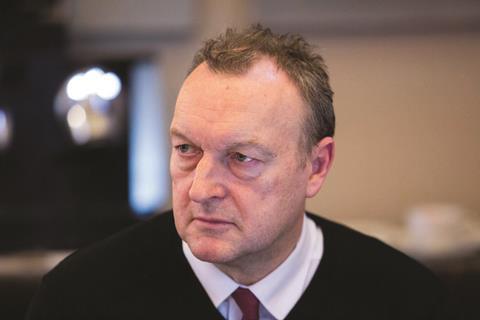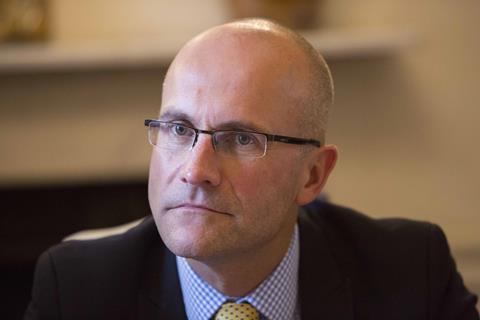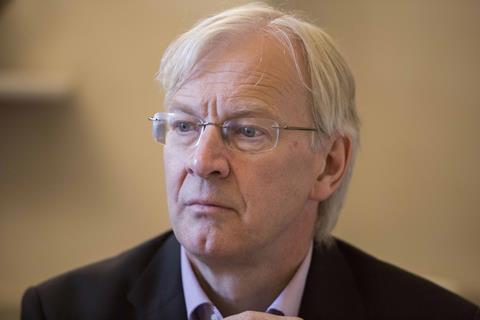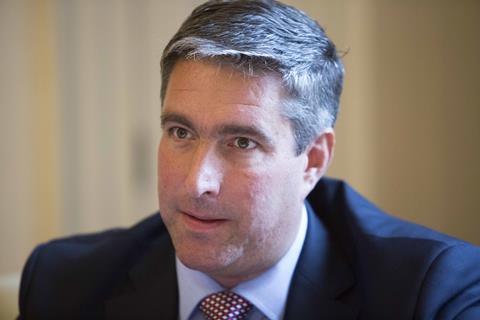Can Lord Carter’s report be a tipping point for procurement? HSJ gathered experts to debate what needs to happen next including better strategy, collaboration and understanding the difference between value and cost. Claire Read reports
In June, when Lord Carter published his interim report on NHS productivity, he added to a long history of reviews suggesting the health service can improve its performance on procurement. As far back as 1999, Sir Peter Gershon published a report on central government procurement making clear that “many of the findings of this review have been identified in at least one of the three previous studies on procurement published since 1993”.

Yet five years later, in his more general study of public sector efficiency, Sir Peter was still urging “better supply side management” and “further professionalisation of the procurement function” as a route to significant public sector savings.
A better approach to procurement
In 2011, the National Audit Office added to the literature with a report on health service consumables – containing the famous, often quoted revelation that trusts bought 21 different types of A4 paper and 652 types of medical gloves – and another highlighting poor procurement on high value items such as MRI and CT scanners.
Come 2013, following a review by Sir Ian Carruthers, the government published Better Procurement, Better Value, Better Care, a strategy document designed to improve healthcare procurement.
The mainstream media headlines accompanying these reports all centred on a theme: that the NHS could save significant quantities of money by making fairly straightforward tweaks to the way it purchases goods and services. The reaction to Lord Carter’s report was no exception: “Simple steps ‘could save NHS £5bn’” announced BBC News Online, explaining that one of those simple steps was a better approach to purchasing.
For those with long memories, the main query around the Carter review therefore becomes whether it can finally represent a tipping point on NHS procurement. Will it be sufficient to drive the changes that have so long been acknowledged necessary – better planning, a willingness to come together to capitalise on economies of scale, greater transparency and the like?
These were the challenging questions on the agenda at a recent HSJ roundtable, supported by Siemens Healthcare. The discussion began from a place of optimism, with praise for the practical and sensible approach the Labour peer had outlined in his interim report.
Roundtable participants
Professor Erika Denton national clinical director for diagnostics, NHS England
Mike Farrar independent consultant and former chair, NHS Confederation (roundtable chair)
Peter Harrison managing director UK, Siemens Healthcare
David Pierpoint managing director of procurement and customer engagement, NHS Supply Chain
Steven Pink director of change and commercial delivery, NHS Business Services Authority
Peter Smith managing director, Procurement Excellence and managing editor, Spend Matters
Keith Rowley managing director, North of England Commercial Procurement Partnership
Ian Turner finance director and deputy chief executive, Healthcare Financial Management Association
Alan Turrell strategic lead for planning, contracting and procurement, Walsall CCG and council member, Health Care Supply Association
‘The challenge was whether healthcare was at last ready to make such improvements’
“Talking to finance directors, the Carter report has hit a sweet spot and there’s a very positive reaction to it,” reported Ian Turner, finance director and deputy chief executive of the Healthcare Financial Management Association (HFMA), the professional body for those working in healthcare finance. “Certainly if you talk to the financial directors involved in the 22 trusts [which Lord Carter initially studied to come to his recommendations], they’re quite passionate about this.”
“The Carter report has been incredibly eloquent in simplifying actually what needs to happen,” agreed David Pierpont, managing director of procurement and customer engagement for NHS Supply Chain.
The challenge, he argued, was whether healthcare was at last ready to make such improvements.
“There are probably a lot of things in [the interim report] that, in the nicest sense, aren’t rocket science. Are we as an industry and a market willing to step into that change, and what’s going to create the conditions for that change?”
Erika Denton – national clinical director for diagnostics at NHS England – fully concurred. “Reading Carter, most of it is a no brainer; most of this is good housekeeping for want of a better way of putting it,” she suggested. “But we don’t provide the support for the good housekeeping.”
One rudimentary part of that support, many suggested, was a fuller understanding of the importance of procurement. “I think one of the dimensions is whether procurement is seen as a strategic function or is it seen as transactional?” suggested Alan Turrell, strategic lead for planning, contracting and procurement at Walsall Clinical Commissioning Group.
“I think one of the difficulties at local level is that supply, as it used to be known, was seen very much as a transactional function – processing requisitions – and there is no real vision about the wider strategy in terms of what contribution procurement can make. In my current role, my starting point is always: what is the organisation’s overall objectives and values, and how can we make those happen through our procurement activities?”
Added Professor Denton: “At a trust level, procurement is seen as transactional – it’s seen in a radiology department as: ‘Ah, our CT scanner’s 10-years-old and it keeps failing on us, we need a new one.’ Not as what is our capital procurement plan, our capital replacement programme. Only a handful of trusts have a really effective strategic view of how they deliver their procurement processes.”
David Melbourne: Three areas for progress in procurement
Over many years a whole range of commentators, analysts and reviews have highlighted that the way the NHS purchases its goods and services could be significantly improved. I believe the work that Lord Carter has undertaken on efficiency provides a focus on how we might reduce the variation in value and cost that we see in procurement across the NHS.
I don’t think there is any one “silver bullet” that will solve the issue, but hopefully the work will identify the opportunities trusts have for making savings on their non-pay expenditure and allow a consensus to develop on how we can secure these efficiencies.
I think there are three specific areas in which the NHS could make progress on this: communication and collaboration; size, scale and consistency; and development of the function.
Improving communication and collaboration
Not only do many providers have their own procurement strategies and functions, but we also deal with many different procurement and delivery channels.
This disaggregation in the ordering of the same goods and services and fracturing of the procurement expertise has led to suboptimal results. It means there is no common face of NHS procurement, but also that suppliers can exploit the fragmentation.
While some progress has been made, more needs to be done if procurement is going to contribute to addressing the major financial challenge the NHS faces. Given the scale of the challenge and the variation that we see, the current procurement business model needs some thought.
Such change will take time. It probably needs to begin with far better collaboration through procurement bodies such as the Shelford Group, the NHS Supply Chain customer boards and other local procurement boards. In many parts of the country, these collaborations are beginning to develop and provide a forum to exchange ideas and begin to get a common approach on some of the big issues.
Size and scale and consistency
We need to use the results from Carter to also think about size. One of the biggest drivers of value in procurement is commitment and scale, and we need to work better together in ensuring we can secure this.
This doesn’t just mean getting better at working together to secure the best deals for the NHS. It also means thinking about how we organise ourselves across providers. I am still surprised that many of the national initiatives launched by NHS Supply Chain are not taken up by all trusts. If the Carter metrics allow an increased take up of the NHS Core List or Compare and Save then it is beginning to do its job.
At a time when we are congratulating organisations for being successful in vanguard bids, we need to think how we can apply this joined up approach to procurement. This might prove a challenge to organisational boundaries but would allow a step change in the development of the procurement profession.
For example, some of the most effective organisations in the NHS procurement landscape have the scale to have clinicians in the procurement team. These individuals can bring real value to this agenda by making sure best decisions are made, providing great outcomes for patients at an affordable price.
However, it is telling that it is normally only affordable and possible within the larger providers with larger procurement functions. Similarly peer support; developing effective local procurement business partners; training and development; and career progression are more effective if there is a critical mass within the procurement team.
This may mean a change in emphasis and sometimes brave decisions about where the procurement function best sits. In a difficult financial landscape, bringing together functions may be one of the ways to provide the resource to develop a world class function.
Developing the procurement function
To develop the procurement function, we need to ensure we invest in leadership for procurement in its own right. This should begin by ensuring that we all consistently focus on delivering a range of initiatives from effective catalogue management through to engagement of frontline staff.
The work the Royal College of Nursing has undertaken on the Small Changes, Big Differences campaign is a great start. We really need to ensure this is embedded across our organisations. However, we need the capacity for procurement business partners to talk to the front line of staff making those purchasing decisions.
In order to have that effective dialogue we need good quality management information. So we all need to get behind and support the implementation of the Department of Health e-procurement strategy.
This is a big challenge and opportunity for the procurement function, and one to which the work undertaken as part of the Carter review can give some impetus.
David Melbourne is interim chief executive and chief financial officer of Birmingham Children’s Hospital Foundation Trust.
Measuring value
That Lord Carter was charged with reviewing productivity, and focused on procurement as part of that rather than having it as sole focus, may aid a changed understanding. “I think there’s a real opportunity here,” suggested Mr Turner.
“The review spawned out of procurement, but actually it covers much more than traditional procurement: it’s getting into the whole area of value, and how do you make a hospital better and so forth.”
The difference between value and cost, and ensuring this nuance was widely understood, was a theme during this roundtable debate. The “adjusted treatment index” – announced in Lord Carter’s report, and designed to allow the comparative ranking of hospital efficiency – will be a clear metric.
But measuring value is a trickier proposition, the group agreed.
“Having had some conversations with the team who’ve been doing the work [on the metric], and who are going to be doing the next part, including the model hospital work, it’s very difficult to establish metrics that actually do bring value into the equation,” reported Professor Denton.
‘It’s hard to measure how successful procurement is’
She continued: “Metrics by and large are performance related and are related to things that are easy to measure, by their very nature. In my space, I’ve got metrics around two week waits and six week waits, and I’ve got metrics around turnaround times, and I’ve got some objectives around seven day services, and how we might measure things there. But none of those talk about value because it’s very difficult to actually measure what you mean by that.”
“It’s hard to measure how successful procurement is,” agreed Peter Harrison, managing director UK of Siemens Healthcare. “If you’re doing it purely on the basis of price paid, that’s a very, very crude approach and it really denies the opportunity of [exploring] the value delivered during the process.”
Peter Harrison on securing best value
As cited in Lord Carter’s interim report, the Commonwealth Fund report Mirror, Mirror on the Wall rates the NHS as the most cost effective health system in the world in terms of value for money for the taxpayer.
That said, Lord Carter goes on to challenge efficiency and suggests the opportunity to save £1bn through procurement management. This may be achievable, though I would maintain that the NHS already benefits from the most powerful regulator of its purchase price for goods and services – a competitive market landscape.
Budgets, and consequently spend, is finite. Companies compete hard against each other to win share of spend, and it is acknowledged that the NHS is a highly price sensitive market. In terms of everyday consumables, Lord Carter’s report discusses the benefits of reducing the range of products.
This may have merit, but care should be taken when comparing goods to ensure that quality differentiation is appropriately acknowledged and valued. Similarly, the NHS will surely want to ensure that it stimulates, and continues to be receptive to, product and service innovation.
If one considers medical imaging and therapy equipment and services, the market is far less crowded than the consumable space. Suppliers certainly still compete on price but other clinical and operational factors also represent value that should be factored into buying decisions.
Indeed, it is evident in many areas of spend that the best value is not always offered by the lowest cost offering. So can appropriately administered procurement frameworks help reduce supply chain costs?
They have the potential to achieve net savings through standardising appropriate trading terms and conditions, and by reducing cost of procurement process (on both buyer and supply sides). That said, any party within the supply chain can only derive reward proportional to their value add.
This naturally applies to operators of such frameworks who need to ensure that they deliver “net” benefit once they have covered their own costs and collected any reward. Buying in quantity has long realised net savings, and the NHS has the opportunity to leverage its buying power.
So, taken to an extreme, might the NHS benefit from a bulk purchase of standardised goods and services over an extended contract term? I would suggest that such an approach risks removing the very competitive dynamic that the NHS currently enjoys, as unsuccessful companies may potentially leave the market due to lack of ongoing opportunities.
The NHS needs to maintain a sustainable dynamic supply market if it is to ensure that it continues to leverage the benefits of a competitive market in the future. Care should be taken not to jeopardise this long term benefit in pursuance of short term gains.
Peter Harrison is managing director UK of Siemens Healthcare.
Added Keith Rowley, managing director at North of England Commercial Procurement Partnership: “Shaving a pound off [the price of] something that then adds £3 to the tariff or reduces efficiency by £4, which is what Carter’s highlighting, is a misnomer.
“But when you start putting good information and data into the hands of the right people, I think you end up in a fundamentally different place, because you end up with a question that says: how do I give a hospital efficiency? Do I actually buy the glove that costs a pound extra because I have fewer failures of it and therefore my trust operational efficiency is greater?”
Steven Pink, director of change and commercial delivery for NHS Business Services Authority, also stressed the need for a full understanding of cost and value. “Any measurement system needs to be sophisticated enough to do that total cost of ownership calculation, because there is no point in buying something cheap that doesn’t work,” he said.
Mr Pink argued understanding the total cost of ownership would also make it possible to decide which goods and services should be purchased locally, and which nationally. It was, he suggested, very far from one size fits all.
“Frankly what works well in terms of aggregation in some parts of the country for different reasons may not work in others,” Mr Pink said. “But there are some things which feel like they’re no brainers; some real commodity products and commodity services which just seem very obvious that they should be bought centrally.
“And when I say centrally I don’t necessarily mean by central government, I mean more by an organisation on behalf of a large part of the system. There are other things where frankly the people that are going to know best what needs to go on in a locality are the local people – funeral services are an example of that.
“As leaders in the system, we have to think in a sophisticated enough way to know that it’s horses for courses.”
It was a point reinforced by Mr Rowley. His organisation is one of four hubs established to formally support better collaboration on procurement at a regional level. But Mr Rowley was keen to emphasise that such setups were not the sole solution to better procurement in healthcare.”
There is definitely value to collaborating on location, but it’s been oversimplification to say an aggregational collaboration works in every case,” he suggested. It brought the debate to an oft discussed issue around procurement: how much should be central, and how much local?
As pointed out by Peter Smith, managing director of consultancy firm Procurement Excellence, the centre has “swung over the years from decentralisation and competition back to ‘we’d better pull some times into the centre’”.
He continued: “They blow hot and cold, so they get excited about this and write a report and then they do something like the NHS Procurement Atlas of Variation which undoes whatever credibility they had for another six months. Where is the leadership going to come from [to make changes to healthcare procurement]?
“I haven’t seen that capability or desire to do it from the centre in the last year or so, certainly.”
What all panellists agreed is that “local” procurement should not be synonymous with “one organisation alone”. Yet concerns were raised about a continuing reluctance to collaborate for value.
Mr Smith said: “I’ve had the chief financial officer of a trust, when I was speaking to him about how he might improve his procurement, saying, ‘I’ll collaborate with some of the big hospitals in London because I’m 50, 80 miles away, but I’m not going to collaborate with Oxford, Southampton and so on.’ He said he wouldn’t work with his neighbouring trusts because he saw them as competitors.”
Competitive edge
“Competition at what I call the front end delivers better clinical outcomes, but do we need competition in the input in terms of the back office?” asked Mr Pierpont.
“Clearly the creation of foundation trusts was to create that market tension and to deliver better commercial outcomes, but we seem to have adopted the desire to want to have competition in all aspects of the system and that is hugely suboptimal, particularly from a procurement point of view.”
Mr Harrison expressed doubt over whether organisations were actually viewing procurement as an area in which to compete. “If for example, I’ve got neighbouring trusts and they both want to buy the same CT scanner from me, I can guarantee you they both want the same [lowest] price,” he said.
“And if there was full price transparency, they’d each take great umbrage if they thought they were paying more than the other. I’m quite convinced that those trusts can compete within the landscape of the foundation trust environment and still buy equipment – whether it’s high value equipment or consumables – at the same price. Everyone wants the best price.”
‘Transparency is our friend’
Transparency is another word often uttered when talking about ways to improve procurement. If organisations knew when they were paying above the odds, the reasoning goes, they would demand better prices.
But here too panellists cited caveats. Mr Rowley argued it was “about how intelligently you use that transparency, otherwise my personal view is all you will do is drive the market to the average price, not the lowest price, because the suppliers will just move prices back up because they’re managing the market.”
Mr Pink echoed this. “As an organisation, one of our mantras is transparency is our friend, because often contracts don’t quite work the way you want them to, so actually use transparency to create a bit of tension and a bit of pressure to get movement. But you have to apply a bit of sophistication to how you then use the transparency, otherwise you’ll fix one problem and create three more.”
In an interview with HSJ back in June, Lord Carter also appealed for intelligence when it came to the NHS’s productivity challenge.
Speaking of the adjusted treatment index metric, he argued that: “It’s going to be extremely important that people get the hang of this data and build up their confidence and comparability in it. We want to make sure everybody has had a chance to comment [and] to explain their circumstances.”
He concluded: “We do not want it used as a crude weapon.”
Whether these words will be heeded – or indeed the words in his broadly welcomed review – will be a key question in the coming months.
What our roundtable members would do to improve performance on procurement
Peter Smith, managing director, Procurement Excellence and managing editor, Spend Matters
“I would identify by acclamation the 20 best procurement directors in the system, and give each of them five or six less good trusts and say, ‘Sort them out as well, please.’”
David Pierpoint, managing director of procurement and customer engagement, NHS Supply Chain
“I’d want us to recognise and acknowledge that competition is not required throughout the system. Competition is good in some parts for driving better outcomes, but competition where it’s creating a suboptimal outcome for the whole of the NHS can’t be right. We’ve got to recognise that actually we don’t need competition throughout the whole system.”
Steven Pink, director of change and commercial delivery, NHS Business Services Authority
“I think as a system we need to be brave in sharing a very demanding and multifaceted expectation of procurement colleagues. I think the Carter work starts to do it in terms of raising the bar in terms of expectation. Most people actually will rise to that challenge. So let’s be brave in terms of what we ask for, and be sophisticated in what we ask for.”
Ian Turner, finance director and deputy chief executive, Healthcare Financial Management Association
“I think the Carter report is really good, but it’s only good if people engage with it and don’t take it as the end product. This is work in progress, and if we all work with this and work with the metrics, try and understand the metrics, get behind them, tweak them, understand where the issues are, I think with full engagement it’s going to be really powerful.”
Erika Denton, national clinical director for diagnostics, NHS England
“I’d like us to move to a point where we see a procurement strategy as a marker of good board practice and board competence. So I’d like us to look to boards to actually have a strategy around procurement, with a five year procurement plan.”
Keith Rowley, managing director, North of England Commercial Procurement Partnership
“Commercial intelligence in terms of system, process and people – and process can be automated systems. That information, data and skills piece is so important.
Alan Turrell, strategic lead for planning, contracting and procurement, Walsall CCG
“I think a key point is that the value derived from procurement is more than just price – I think we’ve got to look at the impact on the whole supply chain costs, we’ve got to look at the clinical outputs, we’ve got to look at broader social value type outputs that come from procurement. I think we’ve got to be very careful of just measuring against the average price.”
Peter Harrison, managing director UK, Siemens Healthcare
“I think that competition is absolutely fundamental to ensuring that buyers realise best value. And I think when we think about that value, what I’d really like to see is an increased sophistication of measuring and assessing what value is, beyond lowest cost, and that assessment should extend beyond departmental budget silos.”
Mike Farrar, independent consultant and former chair, NHS Confederation (roundtable chair)
“I would like to see a greater commitment by NHS leaders to understand the business models that suppliers operate, in order to find risk and benefit share in the future. Because that ‘we’re good and we’re the one with values, the private sector has none’ stereotype gets in the way of being able to get the best solutions. We spend at least 35p in every pound with a commercial supplier, and we do not go out of our way to understand what it takes to be able to deliver the best for both parties, which ultimately means the best for our patients. So I think there is a real issue about the NHS leadership getting over itself in that respect and finding ways to have really constructive dialogue with the private sector.”



































2 Readers' comments